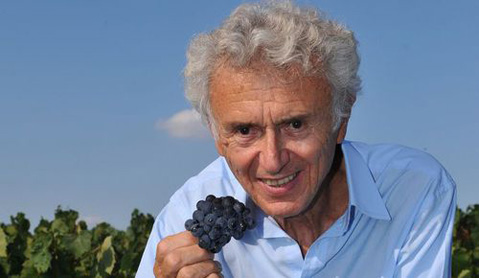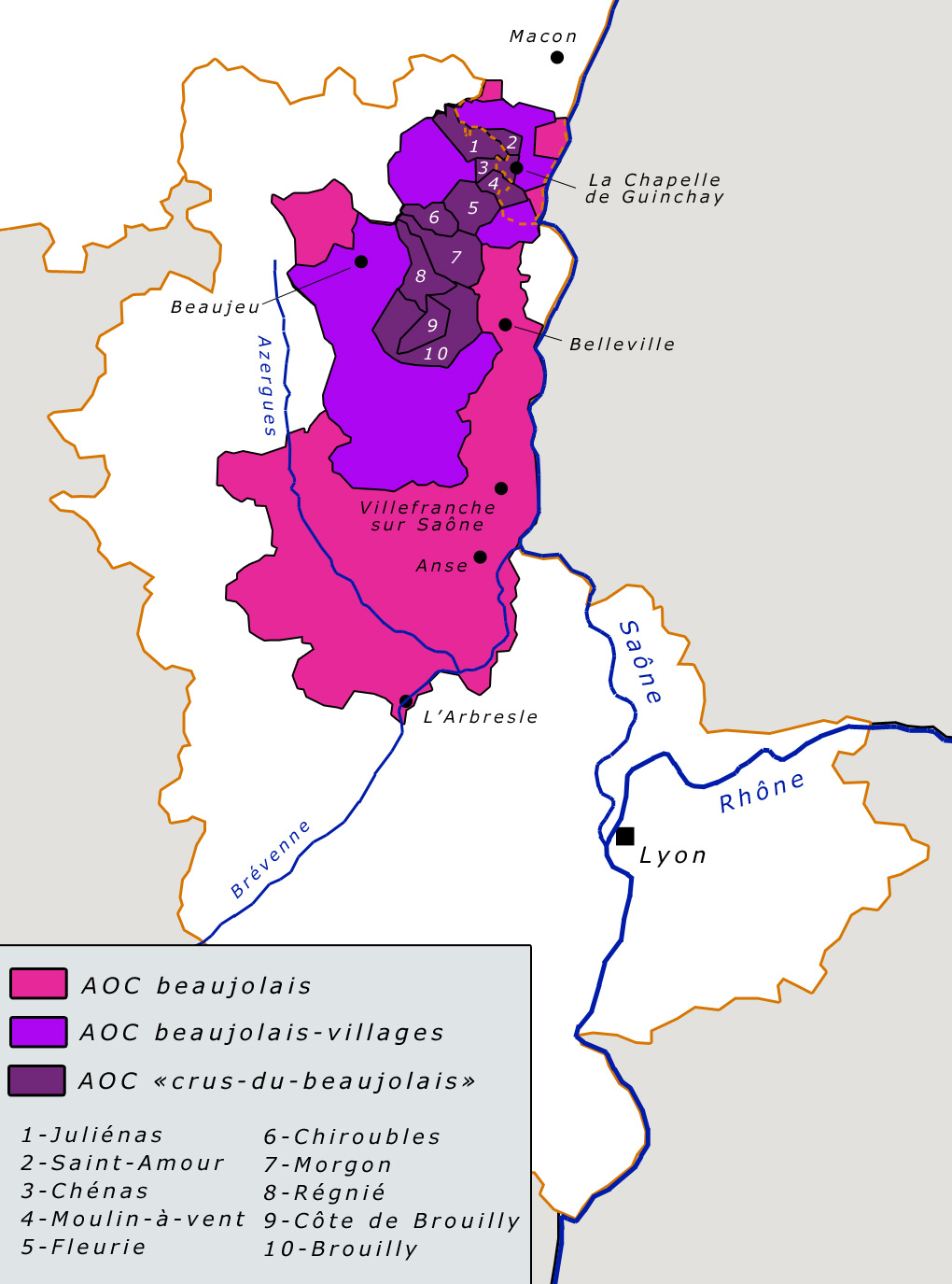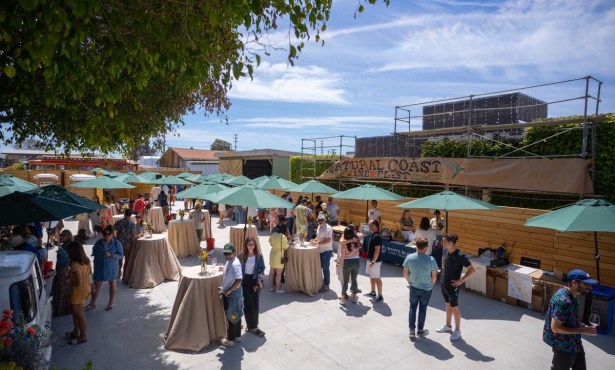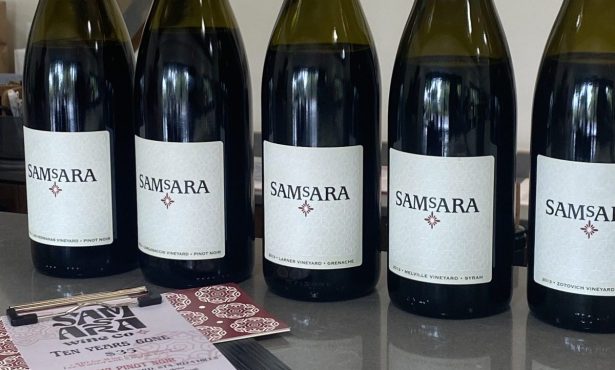Unpretentious Beaujolais
Understanding the Fruit-Forward, Often Young Wines

“Beaujolais is the kind of wine that never does anyone any harm. The more you drink, the more you find your wife pleasant, your friends faithful, the future encouraging, and humanity bearable.” —Gabriel Chavallier (1895-1969), journalist and author from Lyon
No other wine region in France has greater name recognition than Beaujolais, except for possibly Champagne. Located just south of Burgundy, it has become known worldwide for inexpensive, fruit-forward, friendly wines.
Winemaking in the Beaujolais region extends back to the days of Julius Caesar. After pushing north into Europe to conquer the Gauls, some of his soldiers, able to retire after putting in hard years of service, decided to remain in the Beaujolais region. Here they married with the locals and taught them how to make wine. Some of the Cru Beaujolais wines today still reflect these long ago beginnings, like the Beaujolais Julienas, Chateau des Capitans. This wine is named Julienas, after Julius Caesar, and Chateau des Capitans refers to the homes of the capitans of the Roman army that stayed.
Beaujolais vs. Burgundy
The Beaujolais region extends south of its more aristocratic neighbor, Burgundy, to the north, although the two regions do share common topography. Some 50 million years ago, the Great Alpine Folding occurred, pushing up the Alps mountain range. As a secondary result of that tectonic shifting came the rise of the Masif Central, the high ground that occupies much of central France today.

On the eastern slopes of that high ground, the land slopes down and drops some 1,000 meters to the lowlands along the river Saone. This upwelling of south facing limestone and loam hillsides stretches roughly from Dijon to Lyon and is the renowned terroir of Burgundy. Beaujolais is at the southern point of that terroir and here the limestone gives way to hills of granite.
Beaujolais was separated from Burgundy in 1395 by Philippe the Bold, Duke of Burgundy, who felt that the gamay grape was inferior to Pinot Noir. He decreed that only Pinot Noir could be grown north in Burgundy and only gamay grown south in Beaujolais. He ordered all gamay vines uprooted throughout the Cote d’Or in Burgundy. The results couldn’t have turned out better. Pinot Noir and Chardonnay favor the limestone soils, the Gamay grape definitely favors the granite based soil.
Like Burgundy, Beaujolais is comprised of a series of small grower producers who typically grow their grapes on the higher slopes of the hillsides and locate their towns down in the lower valleys. Unfortunately, the Beaujolais region was controlled by a group of negociants for many years who dictated the price of wines from the region. These controllers basically kept the prices paid to the growers low and encouraged mediocre quality. The growers felt that if they were going to get the same price for their grapes, they shouldn’t bother to make the wine any better?
So they continued, year after year, to produce low quality wine that they did not care about. That was the common practice until Georges Duboeuf came along and changed everything. Duboeuf brought a passion to the region that had not been expressed before.
The Duboeuf Factor
At this time, in the early 1950s and before, restaurants bought wine by the barrel and then bottled it in their basements. Duboeuf got the idea of selling wine already in bottles to the restaurants directly from the producers.
To start this innovative procedure, he made his now legendary bike ride through the countryside down to the Le Chapon Fin restaurant in Thoissey with two bottles of wine. There the famous chef, Paul Blanc, received the young man and tasted his wines. He bought the white wine on the spot and told Duboeuf, “If you can find me some reds as good as this, I’ll take them too.” Thus began a long relationship between the two.
The release of the iron grip of the controlling negociants was not easy to break, but the crack in the dam had started. Eventually the medieval system fell. Years later, Duboeuf was instrumental in pioneering things that we now take for granted, like opening tasting rooms at the wineries and allowing people to drive up, taste the wines, and purchase them on the spot. The Georges Duboeuf Empire now dominates the Beaujolais wine industry, producing probably more wine than everyone else in the region combined.
Beaujolais Breakdown
The region of Beaujolais is divided up into levels of quality of the vines and wines. From the lower level vineyards is produced the Beaujolais and Beaujolais Nouveau. Next up in elevation and quality of soil is the Villages designation. These wines are better, but are still very mass-produced. At the top of the hierarchy are the Beaujolais Cru wines. These vineyards are at the top of the hillsides and have the best soils and best orientation to the sun. This is similar to Burgundy where they have the Bourgogne, Bourgogne Villages, Premier Cru, and Grand Cru designations. The Cru Beaujolais designations include Moulin-A-Vent, Chenas, Julienas, Morgon, Fleurie, Saint-Amour, Cote-de-Brouilly, Chiroubles, and Regnie.
A discussion of Beaujolais is probably not complete without talking about the Beaujolais Nouveau phenomenon. In mid-November of 1970, handbills appeared in Paris with the words: Le Beaujolais Nouveau Est Arrive! Le primeur had been made for years of course, but had been gaining in popularity steadily since the early 1950s. It started with Georges Duboeuf, of course, who transported barrels of still fermenting le primeur down the river to the restaurants in Lyon. The wine was still so volatile that it frequently blew out the plugs in the barrels by the force of the carbon dioxide being produced by the fermenting juice.
By the early 1970s, the phenomenon had reached Paris and rapidly became the fashion. By mid-November, most Parisians were pretty depressed. August vacations in the south were but a distant daydream, any vestiges of Indian summer were long gone, and the damp, rainy pre-winter weather had set in. The arrival of a fashionable “wine of the day” that was fruity, friendly, low in alcohol, and easy to consume in mass quantities to wash away dreary reality was readily embraced. It was a hit. It became a contest to see which restaurant could get the first of the year’s le primeur first. Cafes all over Paris wanted to be the first to post the signs that the wine had arrived.
The Great Beaujolais Noveau Run
Well, what happens in Paris, does not stay in Paris. Before long, the delivery of le primeur competition had reached London and things started getting really crazy. The great Beaujolais Noveau Run had begun. The wine had to be picked up in Beaujolas just after midnight on opening day, driven up to the ferry that crossed the English Channel, arriving on the British side in the early morning and consequently arriving in time for the London morning rush hour.
Before long the great Beaujolais Nouveau Run would reach its peak. It started involving high speed vehicles like 3 liter BMW’s, British Range Rovers, a Mercedes 350SL, a blood red Jaguar XJS, a Ford GT-40, and a Ferrari 365 GTC-4. (There were separate categories for motorcycles and aircraft.) Of course, barreling down the auto routes in France in the middle of the night at 170 km/hr (do the math, that is fast), and onto the back roads of England at high speeds eventually caught the attention of the gendarmes and Scotland Yard. They were not amused by the shenanigans.
The Great Run soon tapered off to just a “run” by vintage cars involving such classics as a 1929 Bentley fire engine, a red double-decker London bus, and a 1927 Bugatti Grand Prix racer, a brand new Rolls Royce (driving sedately), and soon became passé. Delivery was taken over by DHL and other modern, albeit less romantic transporters. Today, le primeur is still released on the third Thursday of November and transported rapidly throughout the rest of the world. There is still a tradition of serving the young wine for Thanksgiving, but it will probably never again reach the popularity of its fashion heyday.
Beaujolais Today
In today’s more pragmatic world, le primeur is not looked upon much more than a novelty. If the wine is not consumed by the end of the year, it may as well be thrown out, because it does not last. In my opinion, it is more practical to stock up on wines that, if they are not all consumed during the holiday parties, they will still be good later. Cru Beaujolais wine, which tastes similar but with more complex flavors, will age for 3 to 5 years.
Visionary Georges Duboeuf, who today is 79 years old, remains excited about the region he’s helped to champion. “The sun shines brightly on the 2011 Beaujolais vintage,” said Duboeuf, who calls it a “terrific” vintage. “There is something divine about it. It is like nature has granted, under the sunshine of April, June, and August, a dazzling body.”
Beaujolais to Try
2011 Georges Duboeuf Moulin-a-Vent, Domaine des Rosiers: A solid garnet color with notes of black fruits accented by subtle vanilla aromas on the nose. On the palate, this Moulin-A-Vent is a seductive wine; very sophisticated with a good tannic structure. Intense and rich wine, with touches of smoky wood, the tannins ripe, the acidity a refreshing balancing factor. With its cherry character, there is fruit already, but wait a year and this will be impressive.
2011 Georges Duboeuf Brouilly: The 2011 Brouilly has a purple color. The nose offers aromas of red, black, and stone fruits. The fine, smooth tannins on the palate show excellent maturity and good persistence.
2011 Georges Duboeuf Fleurie, Domaine des Quatre Vents: With a deep garnet color, this Fleurie offers complex and intense nose with a nice balance of floral scents with red and black fruit flavors. A nice long finish with strong, rich, smooth, and racy tannins.
2011 Georges Duboeuf Julienas, Chateau des Capitans: Strong cherry color with a fuchsia reflection. The nose offers vanilla and roasted coffee aromas with a finish of black fruit flavors on a spicy note. On the palate, there are aromas of blackberries and pepper. A wine that promised to have good aging potential.
2011 Georges Duboeuf Morgon, Domaine de la Chaponne: This wine has a beautiful deep color. The nose is fruity and complex with a dominant cherry. On the palate it is pleasantly surprising with its beautiful structure that makes for a lively finish. This wine is very harmonious.
Note: Thanks to Bouchard Pere et Fils, I’ll Drink to That, by Rudolph Chelminski, Robert Parker Jr.,and to Georges Duboeuf.



